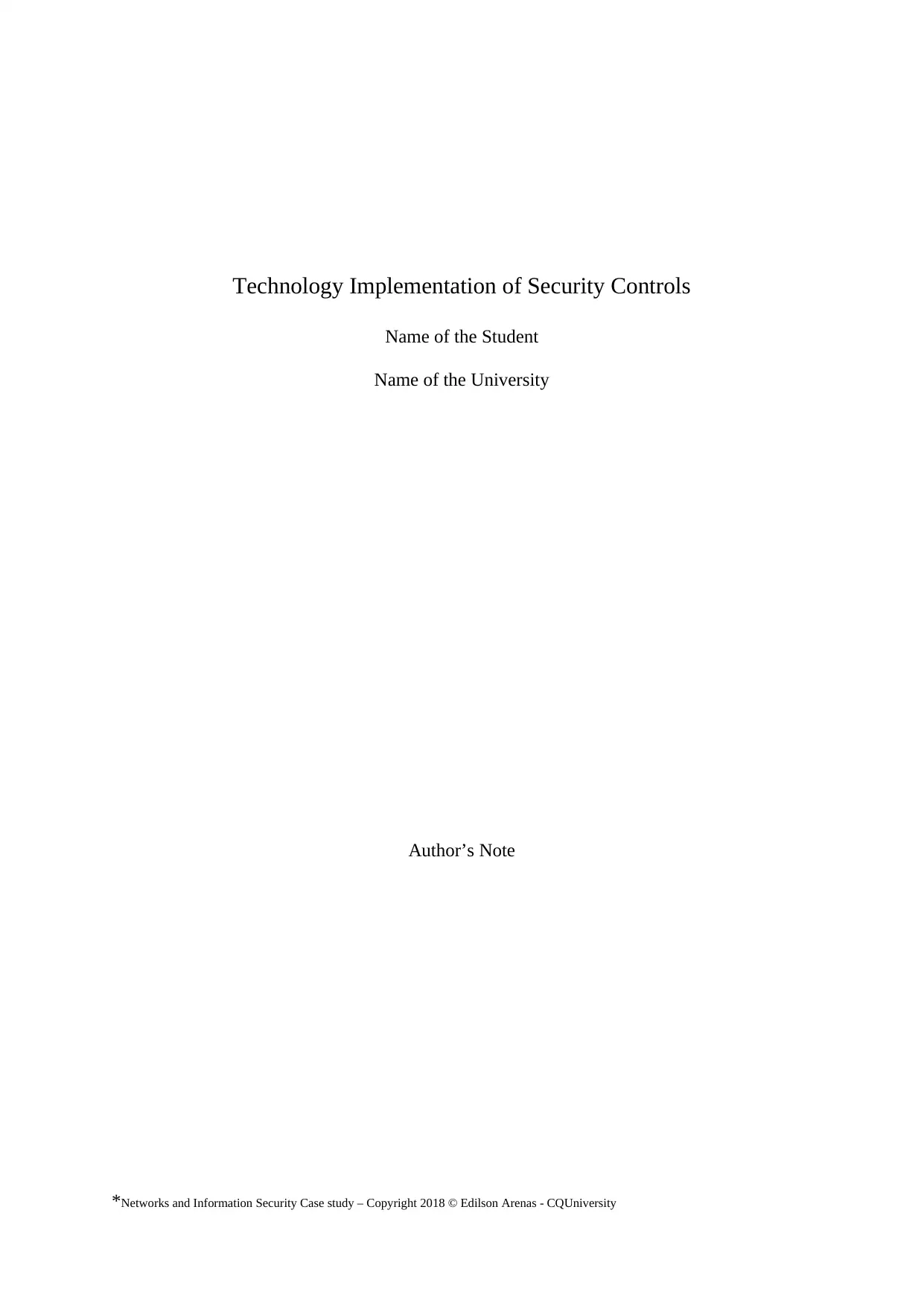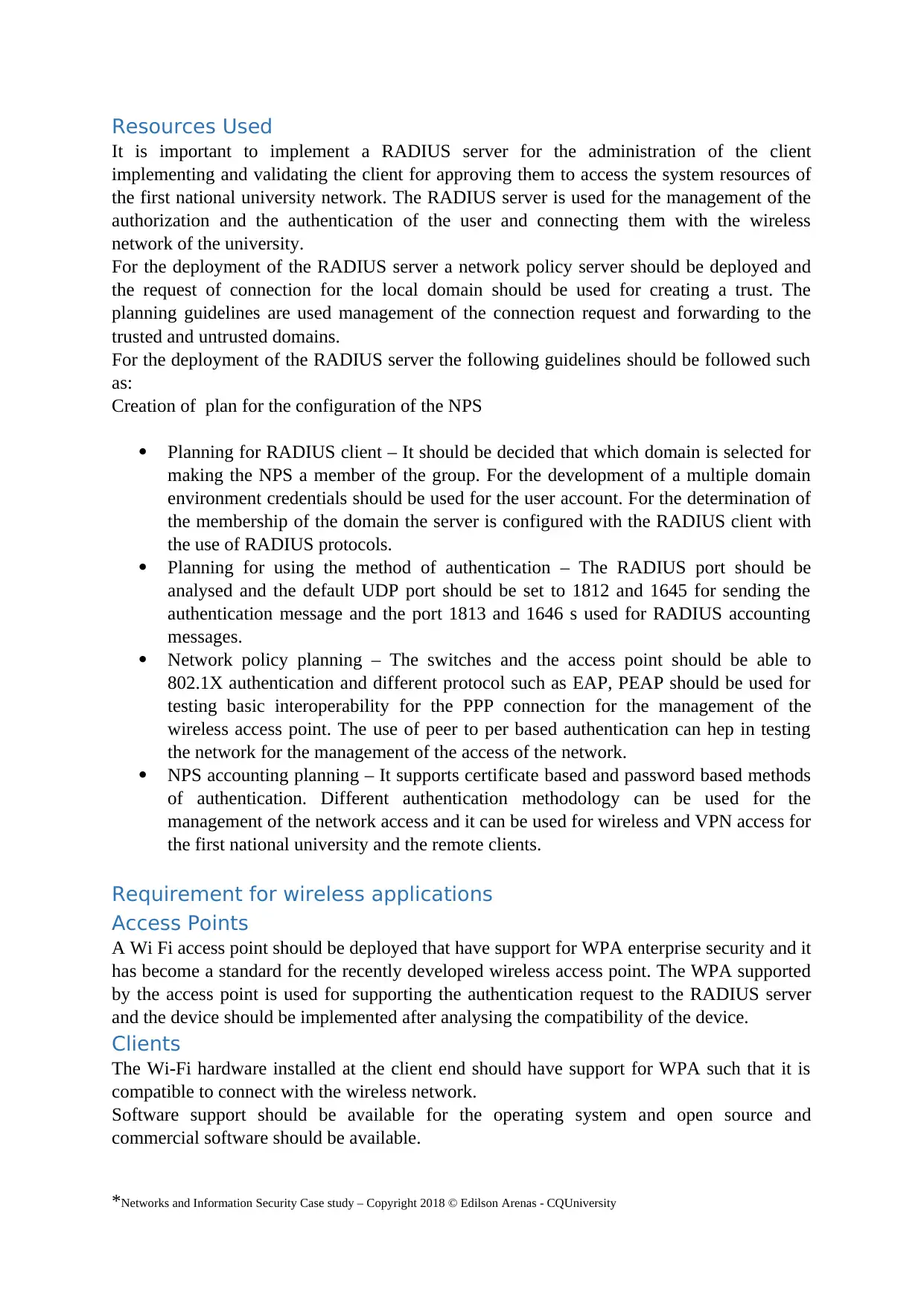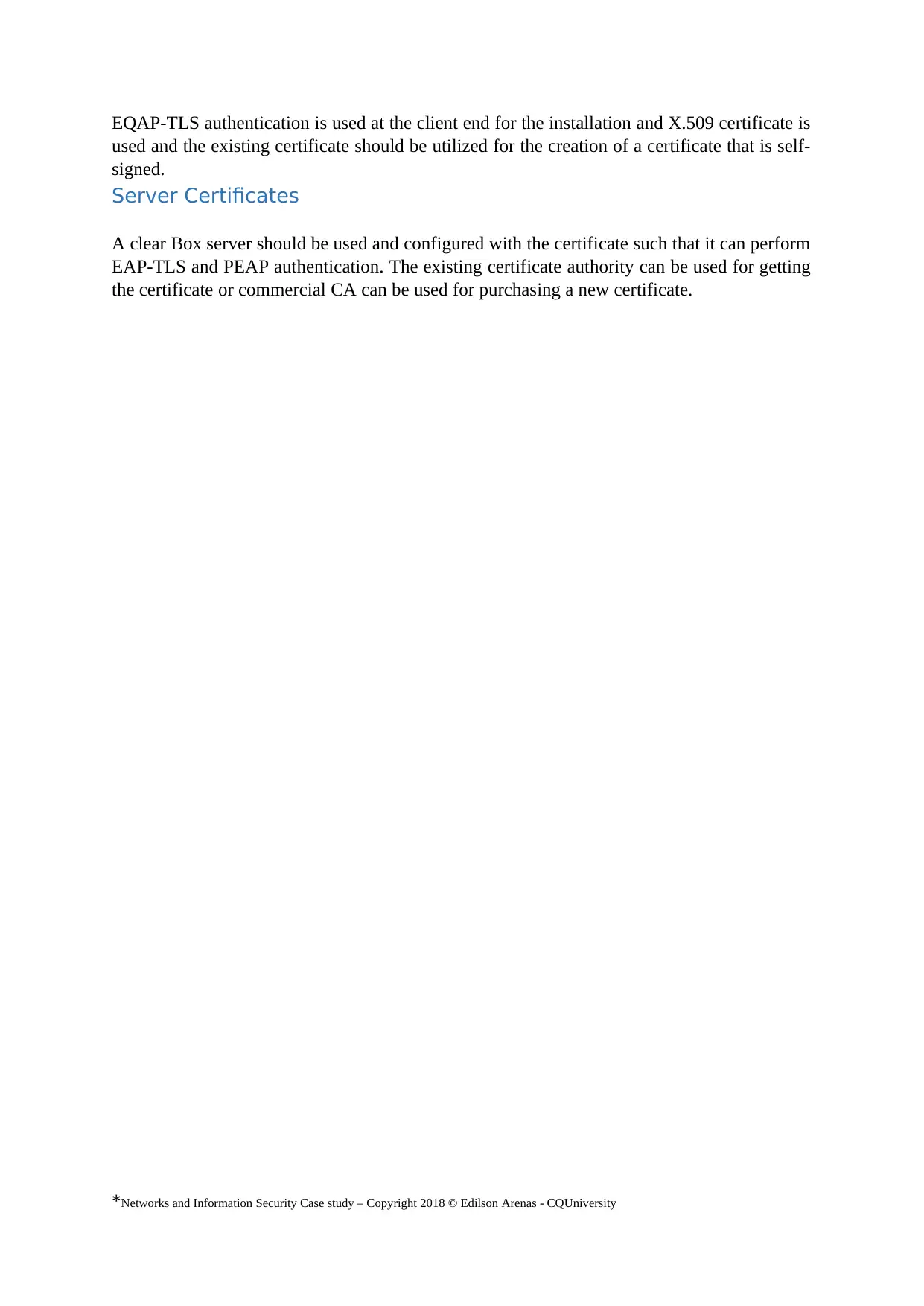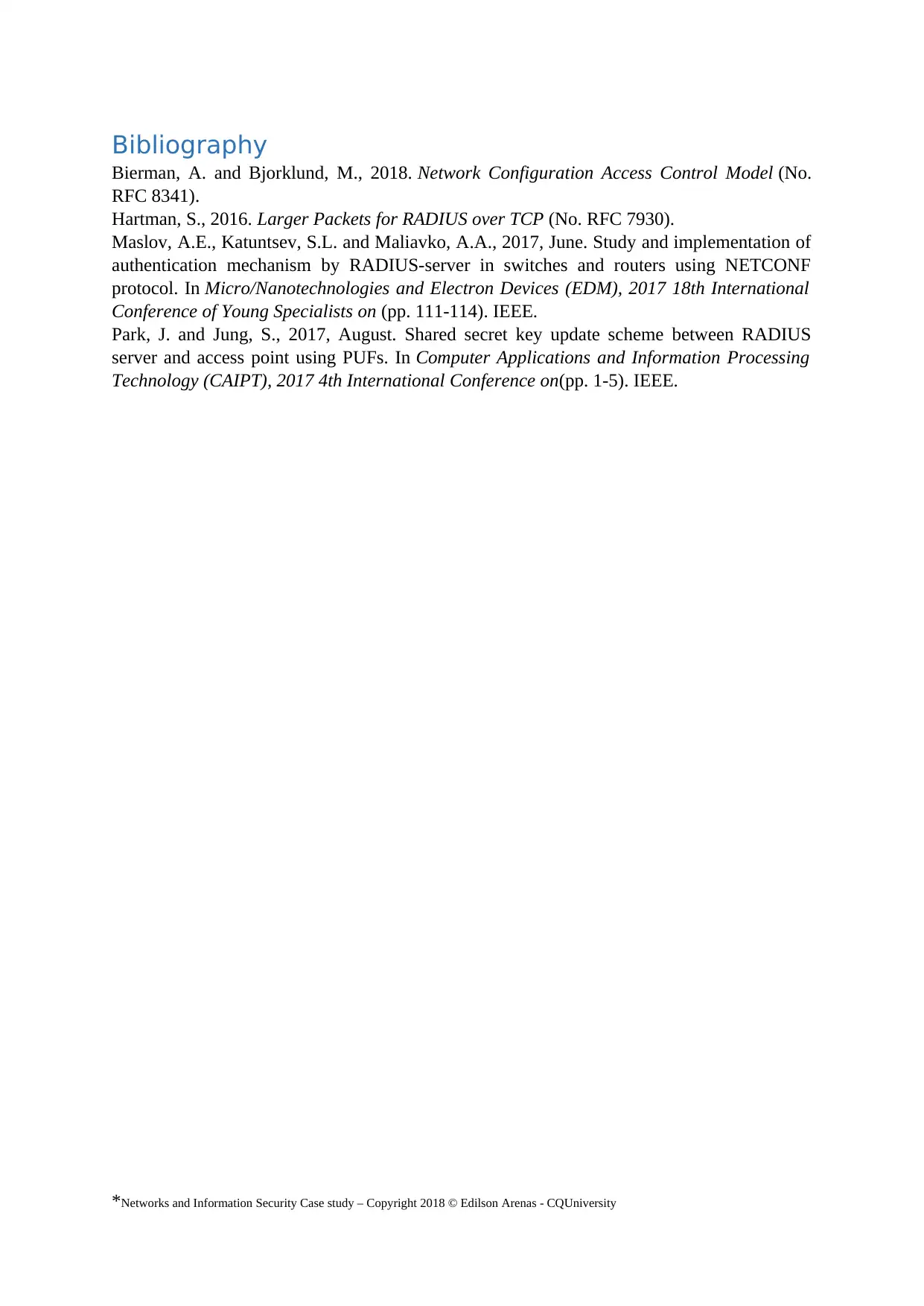CQUniversity: Technology Implementation of Security Controls
VerifiedAdded on 2023/06/05
|4
|787
|192
Case Study
AI Summary
This case study focuses on the technology implementation of security controls, specifically addressing the deployment of a RADIUS server for managing client authentication and authorization within a university network. It details the importance of implementing a RADIUS server alongside a network policy server for managing user authentication and wireless network connections. The study outlines planning guidelines for configuring the NPS, including RADIUS client planning, authentication method selection, network policy planning, and NPS accounting planning. It emphasizes the need for Wi-Fi access points supporting WPA enterprise security and client-end hardware compatibility. The document also discusses the use of EQAP-TLS authentication with X.509 certificates and the configuration of a Clear Box server for EAP-TLS and PEAP authentication, referencing relevant research and standards for network security.
1 out of 4











![[object Object]](/_next/static/media/star-bottom.7253800d.svg)